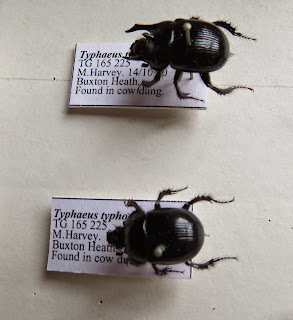Now, I know what your thinking, I have already showed us how to draw butterflies (which you can read by clicking
here). Well, with the emergence of the swallowtails this week, it is hard to resist drawing such a stunning butterfly. Swallowtails are quite challenging to draw and has taken me several hours to complete. This is the reason why I am only doing one drawing today. It takes time, patience and a lot of concentration to draw a swallowtail until it is the way I am satisfied with. Before I begin, I will have to say that if you get tired in any way during your drawing, take a rest. Also, it helps to have a photo to guide you through the complex wing patterns.
 |
| Stage One |
Just like during my How To Draw: Butterflies, create a cigar shape for the body and a circle for the head. Roughly draw the wings. Remember, it is not important if they look right or not, we are only focused on the general shape at this point.
 |
| Stage Three |
 |
| Stage Two |
My attention is completely on the body for now. I divide the body in two other parts, the abdomen and the thorax. Then I shade in the dark areas to it's body pattern and add in the eyes, antennae and legs. Repeat the process using a pen (Stage Three).
 |
| Stage Four |
Now it is time for the tough part, the wings. It helps to do one side at a time. A photo comes in handy here to help work out where each stripe and marking goes. Work from the side of the swallowtail's body and work your way round from the top of the upper wing to the wingtip. It is like a jigsaw puzzle. For the bottom wing, work from the end of the abdomen and work out the pattern to join up with the upper wing, this includes the tail streamers that give the butterfly it's name. Take your time and don't worry too much if the pattern looks a bit rubbish. You have a second chance to get it right when you start to go over in pen.
 |
| Stage Five |
Using a pen can make the pattern appear a lot clearer. You can adjust the areas that look tightly squeezed in and is also a good time time to adjust the wing shape too. Some stripes are boldly shaded in, while the dark panel at the top is created using a series of dots.
 |
| Stage Six |
Now do the same with the other pair of wings on the opposite side. Pencil first, pen second. The challenge is to get the symmetry exactly the same. It is tough, but if you can do one side, you can do the other, too. Spend time to practice and you will get it right eventually.
 |
| Stage Seven |
Finally, it is time to colour in. When freshly emerged, a swallowtail is bright yellow, but fades with age. Make sure you go over the stripes in yellow at the same time. The hind wings have panels of blue, which I dot over in pen. They also have blue and red 'eyes' on the hind wing too. Finish off by using a black pen to go over the dark areas again.
And that is how to draw a swallowtail. I hope your drawing was worth the challenge as was mine. It is a real treat to draw as it is to see. Swallowtails are a true icon of the Norfolk Broads and I can't wait to see them again.

 I am not a gardener or an expert on plants, but I do know that this is a display of foreign flowers. Originally from Asia, rhododendons were brought over to decorate estate gardens and have now spread across the UK. In Scotland, in particular, these plants are causing a real problem in the ancient Caledonian forests and have become quite invasive. In Sheringham Park, everything seems to be in control and is celebrated for the vibrant colours. There is even a tower to climb and appreciate the display more.
I am not a gardener or an expert on plants, but I do know that this is a display of foreign flowers. Originally from Asia, rhododendons were brought over to decorate estate gardens and have now spread across the UK. In Scotland, in particular, these plants are causing a real problem in the ancient Caledonian forests and have become quite invasive. In Sheringham Park, everything seems to be in control and is celebrated for the vibrant colours. There is even a tower to climb and appreciate the display more.



















































